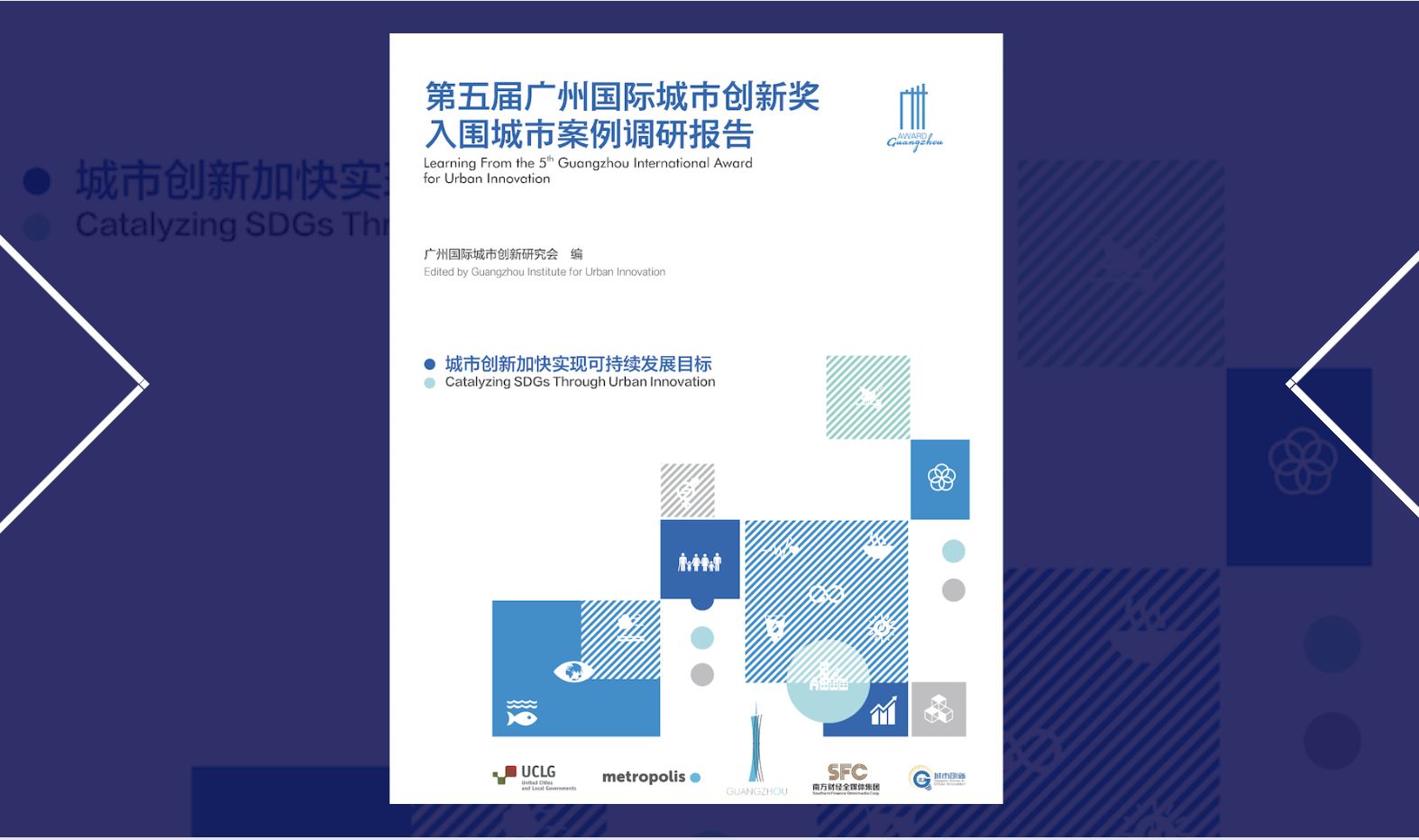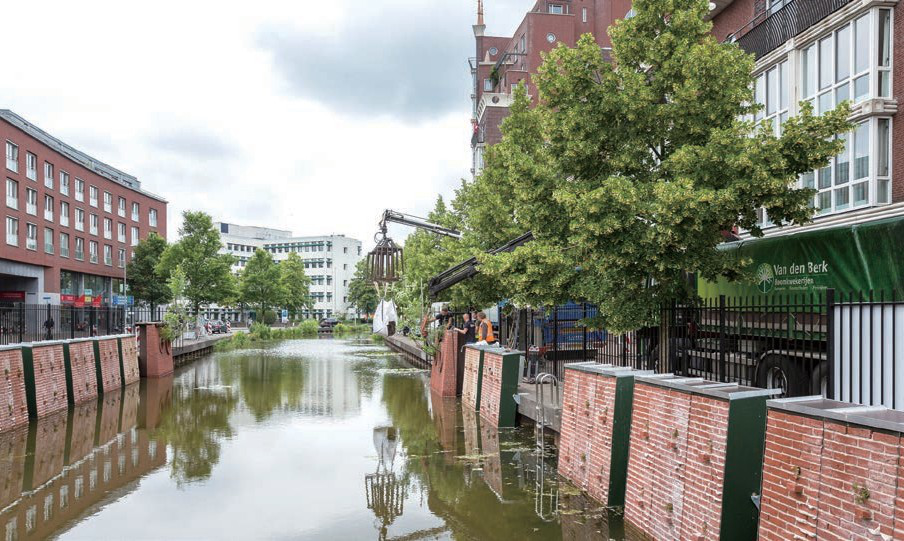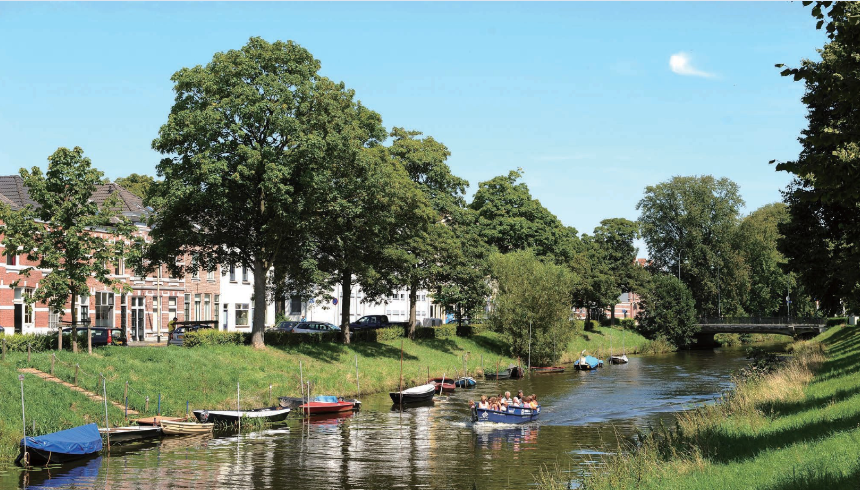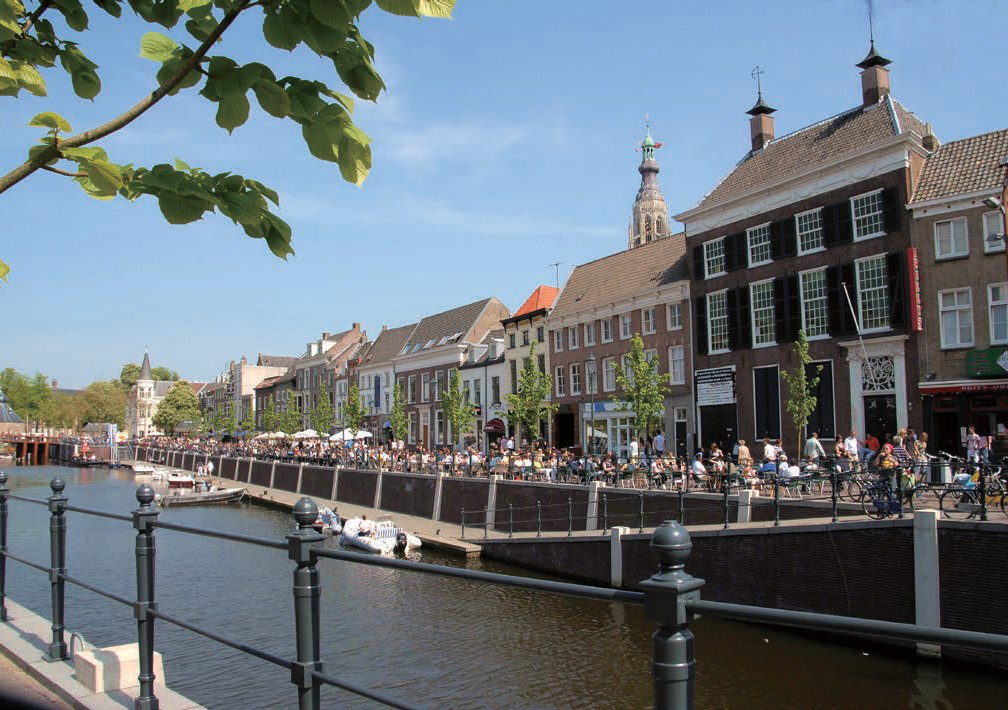City Stories | Breda, Netherlands: Green Quays—Urban River Regeneration Through Nature Inclusive Quays
Editor's notes
On December 12, 2022, a report, Learning from the 5th Guangzhou International Award for Urban Innovation, was released at the 2022 Workshop for Thought Leaders and Guangzhou Award 10th Anniversary Celebration. The report features interviews with the protagonists and stakeholders involved in these fifteen outstanding initiatives in urban innovation and evaluation on their systemic impact and global relevance.
Cities have always been a source of innovation. The 15 shortlisted cities for the 5th Guangzhou Award in the report will serve as a guiding reference for cities around the world to find new solutions. This section will share the knowledge and experience of urban governance innovation with readers by selecting excellent urban innovation cases from the report.

The harbor and river in question are the confluence of the Mark and Aa Rivers, which give the city its name: brede Aa, meaning the “wide Aa” or “broad Aa” in Dutch. The river and its harbor were once the lifeblood of Breda’s steel industry, but priorities changed with the advent of the automobile in the post-war era. In the 1950s, city leaders chose to pave over the harbor and divert the river to man- made canals. In 1966, Breda became home to Europe’s first underground parking garage.
With their constant refrain, the D66 councilors were early adopters of what later became a common attitude. “At the end of the last century, people realized they had made a planning mistake,” said Roel Kiel, project leader for the municipal effort to daylight the River Nieuwe Mark. “You don’t want cars in the city center.”

In 2007, the persistent councilors got their wish. The Dutch military vacated an installation along the paved harbor and the municipality moved to correct their nearly 60-year- old mistake. The River Nieuwe Mark saw daylight once again and began flowing freely through the center of Breda.
“For our city, it was a special thing to do because you don’t make a new river every day,” said Kiel. Over the decade since Breda residents could stroll the banks of the River Nieuwe Mark once again, the city center has blossomed with new residential properties, hotels, cafes, and restaurants along the river. Small boats dock in the harbor and locals recreate on stand-up paddleboards from an artificial beach. The increased street life and economic activity have diminished drug trafficking and city center violence.
“The whole west side of the city center came to life again,” said Kiel.
But uncovering the river was not enough to satisfy Breda residents, who clammored for more nature in the city. The typical Dutch waterway is lined by stone quays
with nary a plant in sight. Stef Goedhart, a 39-year-old multimedia designer who lives walking distance from the riverfront, was one of those critics. “The city center is the hottest place in town in summer and also one of the hottest places in Holland,” he said. “For a city, Breda is quite green, but there is also a lot of stone. There is more need to green up areas.”

The call for more greenery was heard loud and clear at city hall. “When the city was criticized for too much stone, it changed the mind of our designers, and we searched for funding and design partners to help us with a greener, more climate-adapted and more biodiverse design,” said Kiel.
Thus was born the Green Quays Breda initiative in 2018 under the auspices of the Breda Department of Spatial Planning. The municipal agency forged a partnership with the Delft University of Technology (TU Delft), the country’s leading technical university, to design a quay that could accommodate vegetation growing vertically along the stone wall. TU Delft ultimately came up with a design that layers sheet pile, a concrete wall, and stones on the wall. There is a substrate between the stone and the concrete to nourish plants and seeds.

“This is a paradigm shift, the first time that we look not just at the water but regard the walls along the water as a potential new vertical ecosystem,” said Netherlands-based architecture critic Tracy Metz. “The typical urban quay is a hardscape made of bricks. And indeed, just like with dikes, the traditional response has been to keep them free of vegetation, as roots can undermine the structural integrity of both the innards of the dikes and the masonry of the quays.” With centuries-old water infrastructure beginning to crumble across Holland, Metz believes that Breda’s innovation could be broadly applicable for public works across the low countries.
The design is currently in a test phase, with 12 panels installed along the river for one year to observe how well they both nurture plant life and maintain their structural integrity. In May 2021, the test was about halfway complete. The 12 panels cost €200,000 total. Breda has a goal of expanding to a length of 175 meters along both sides of the river at a cost of €2.5 million. The total project cost is estimated at €35 million, with two-thirds of the funding already allocated by the European Union and local government contributions.
Metz questions this potentially high cost. “Of course this is innovative, and experiments are always expensive, but I still can’t help wondering whether the ecological contribution of these green quays merits such major expense,” she said. “We have to ask ourselves: what other climate mitigation or adaptation investments could we have done with big bucks like this?”
For everyday citizens, however, the benefits so far outweigh the costs. “It’s nice to see how it’s growing even though it’s just an experiment,” Goedhart said. “With the new green walls, you can bring wildlife back and cool down the area with the new green quays.”


 In Focus | World Cities Day: People-Centred Smart Cities
In Focus | World Cities Day: People-Centred Smart Cities City Stories | Fostering community resilience: A lifeline for the Central African Republic
City Stories | Fostering community resilience: A lifeline for the Central African Republic In Focus | Innovative Education, Empowering Futures
In Focus | Innovative Education, Empowering Futures




















 Tel: +86 020 3780 4434
Tel: +86 020 3780 4434 Email: info@guangzhouaward.org
Email: info@guangzhouaward.org Adress: Unit 01-7, 28th Floor, No. 7, Chunrong 3rd Road, Tianhe District, Guangzhou, Guangdong, 510000, PRC
Adress: Unit 01-7, 28th Floor, No. 7, Chunrong 3rd Road, Tianhe District, Guangzhou, Guangdong, 510000, PRC




